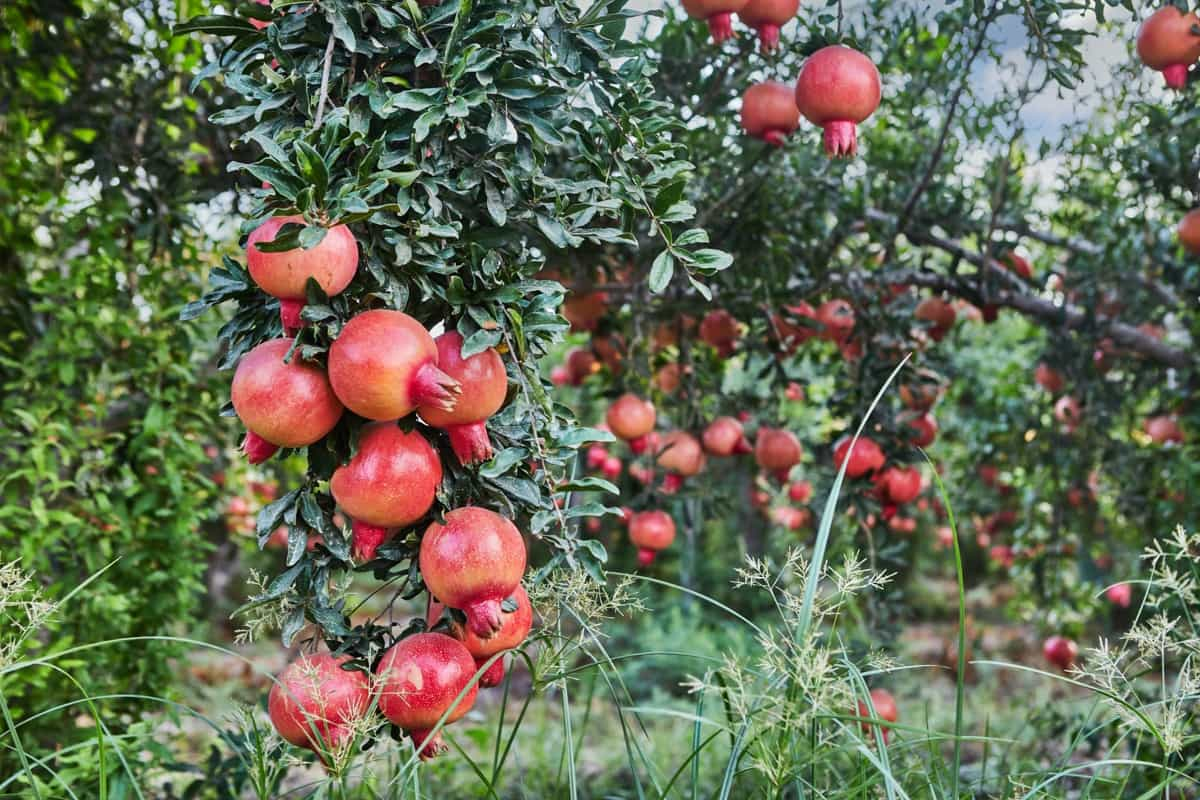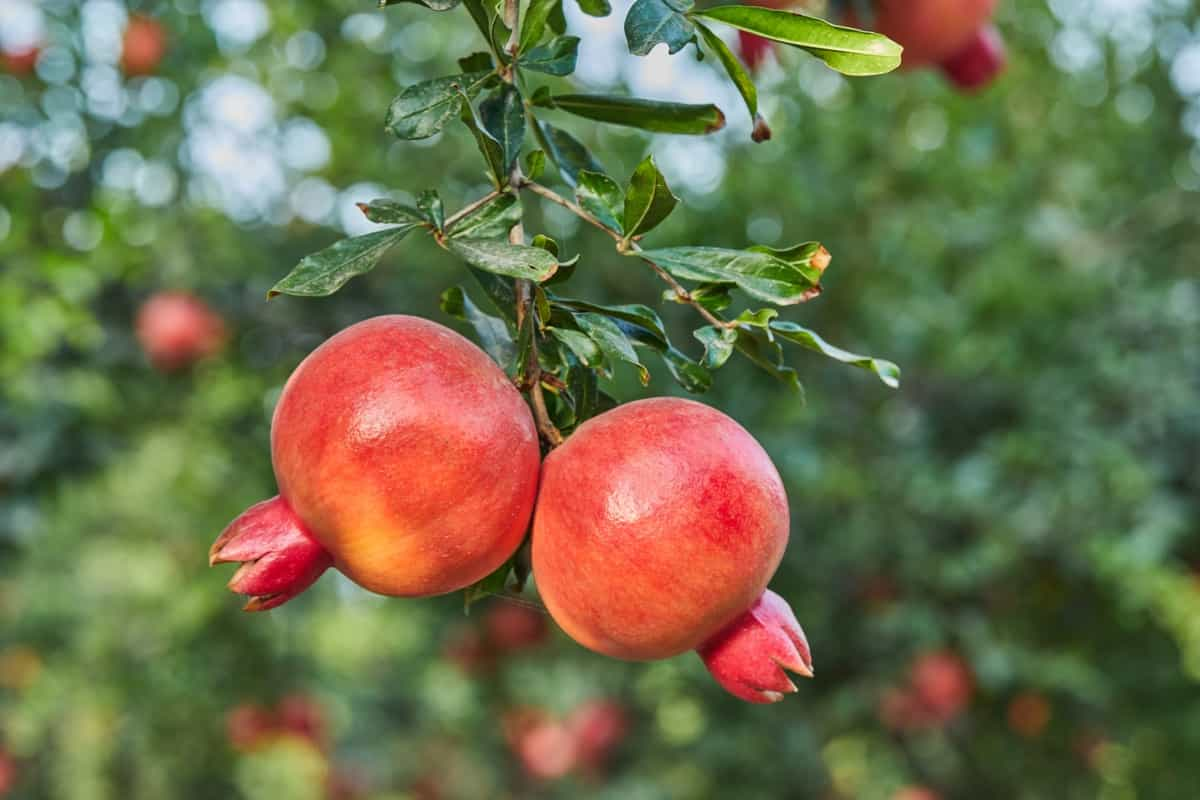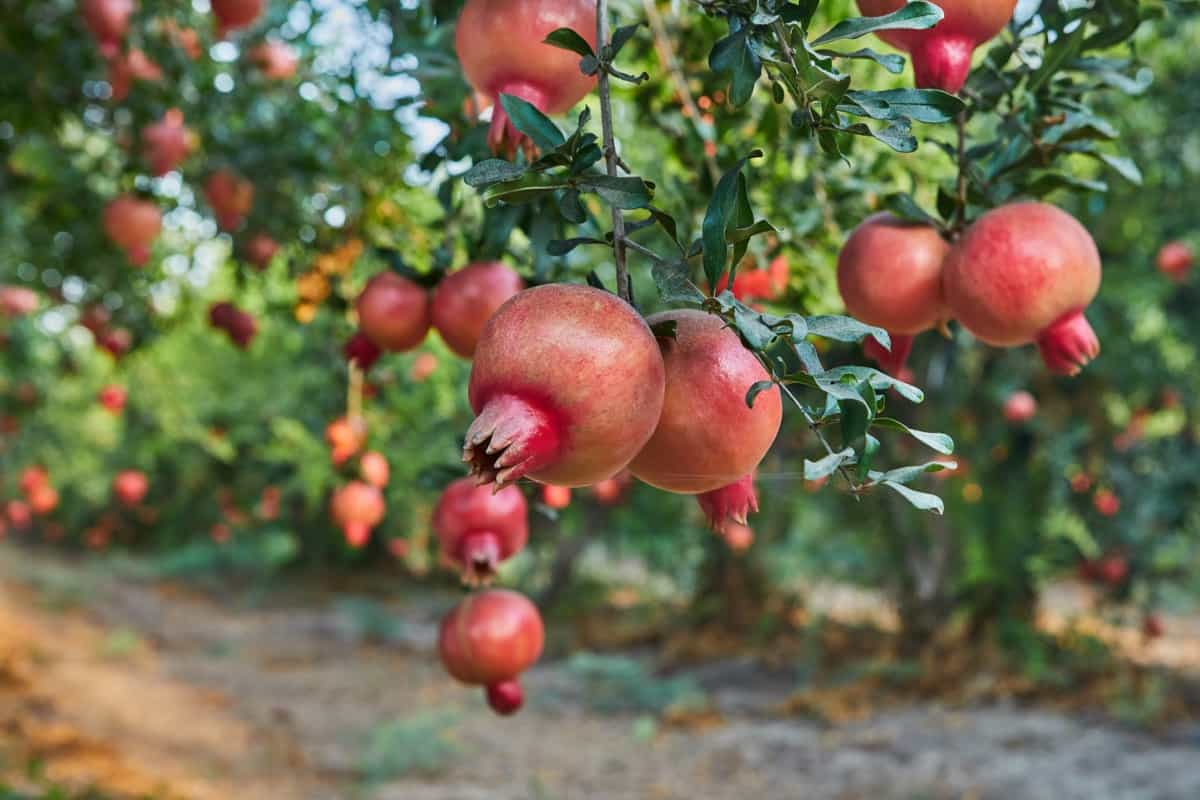By understanding the factors that affect fruit size, implementing proper pruning and training methods, optimizing fertilization and irrigation practices, protecting against pests and diseases, and adopting appropriate harvesting and storage techniques, you can successfully achieve bigger Pomegranate fruits.

Remember that fruit size management requires a combination of knowledge, skill, and dedication. It is important to regularly monitor your trees’ health and adjust your practices accordingly. By consistently following these guidelines, you will be able to enjoy abundant yields of large Pomegranate fruits year after year.
How to Increase Pomegranate Fruit Size
Optimizing Soil Nutrients for Larger Pomegranate Fruits
To achieve larger Pomegranate fruits in your orchard, it is crucial to optimize the soil nutrients. The right balance of essential nutrients will provide the necessary fuel for the development and growth of these juicy red gems. Nitrogen plays a vital role in promoting vegetative growth, so make sure there is an adequate supply throughout the growing season. Phosphorus aids in root development and fruit formation, while potassium enhances fruit quality and overall plant health.
In addition to these macronutrients, micronutrients such as iron, zinc, manganese, and copper are also essential for optimal Pomegranate growth. Regular monitoring of nutrient levels and adjustments based on plant requirements are key for maintaining an ideal nutrient balance. Remember that excessive fertilizer application can lead to imbalances or even damage to plants. Organic matter incorporation improves soil structure and fertility over time by increasing water retention capacity and microbial activity.
Maximizing Sunlight Exposure for Bigger and Better Pomegranate Fruits
When it comes to growing Pomegranate fruits that are big and bursting with flavor, maximizing sunlight exposure is key. Pomegranate trees thrive in areas with plenty of sunshine, so ensuring they receive ample sunlight throughout the day is essential for optimal fruit growth. One way to maximize sunlight exposure for your Pomegranate trees is by strategically pruning surrounding vegetation.
By trimming back any overhanging branches or nearby plants that may be blocking the sun’s rays, you can create a clear path for sunlight to reach your Pomegranate tree’s canopy. Another technique to enhance sunlight exposure is by using reflective mulch around your Pomegranate tree. Reflective mulch helps bounce additional light onto the lower branches and fruiting zone, increasing overall photosynthesis and promoting fruit growth.
The Role of Pruning in Increasing Pomegranate Fruit Size
Pruning is a crucial factor to consider in increasing pomegranate fruit size. By selectively removing branches and shoots, pruning helps to improve sunlight penetration within the tree canopy, leading to bigger and better fruits. When it comes to pruning Pomegranate trees, timing is key. The best time for pruning is during the dormant season when the tree is not actively growing.
In case you missed it: Different Methods of Pollinating Pomegranate Trees: A Guide for How to Pollinate Pomegranate Trees

Remove any dead or damaged branches. These can hinder growth and contribute to disease spread. Next, thin out crowded areas by cutting back excessive growth. This promotes optimal light exposure and prevents competition among branches. It’s important to strike a balance between maintaining a strong framework of main branches while also encouraging new growth for increased fruit production. Prune off weak or crossing branches that may be limiting nutrient distribution or blocking sunlight.
Irrigation Techniques for Larger Pomegranate Fruits
Irrigation plays a crucial role in the growth and development of Pomegranate fruits. By providing the right amount of water at the right time, you can ensure that your Pomegranate trees produce larger and juicier fruits. One important irrigation technique is drip irrigation. This method allows for precise watering by delivering water directly to the roots of each tree. It conserves water and ensures that moisture reaches the plants’ root zone, promoting optimal fruit size.
Timing is key when it comes to irrigating Pomegranate trees. During the growing season, it’s important to provide regular deep watering to support healthy fruit development. Monitoring soil moisture levels is essential for effective irrigation management. Using a soil moisture meter or conducting a simple finger test can help determine when it’s time to water again.
It’s also crucial to consider factors such as climate and weather conditions when planning your irrigation schedule. Adjustments may be needed during periods of high temperatures or prolonged dry spells. In addition to proper timing and techniques, maintaining consistent moisture levels throughout the growing season is vital for optimizing fruit size. Avoid extreme fluctuations in soil moisture by regularly checking on your trees’ hydration needs.
Fertilizer Application for Bigger Pomegranate Fruits
Proper fertilizer application is crucial when it comes to growing bigger and better Pomegranate fruits in your orchard. Nitrogen, phosphorus, and potassium are crucial macronutrients that play a key role in fruit development. Nitrogen promotes vigorous growth, while phosphorus aids in root development and overall plant health.
Potassium enhances fruit quality and helps improve resistance against diseases. When applying fertilizers, it’s important to follow the recommended dosage instructions provided by experts or based on the results of your soil test. Over-fertilization causes excessive vegetative growth at the expense of fruit production.
Pomegranate Fruit Thinning: When, How, and Why to Thin Fruits for Optimal Growth
Thinning Pomegranate fruits may seem counterintuitive at first. Well, it turns out that thinning is a crucial practice if you want larger and more luscious Pomegranate fruits. Typically, it’s best to begin the process when the fruits are about marble-sized or a few weeks after bloom. This allows you to assess which fruits are developing well and which ones might be too small or damaged.
Now, let’s talk about how to thin your Pomegranate fruit. The key is to select which fruits to remove carefully. Look for those that are misshapen, wrinkled, or showing signs of disease or pest damage. Gently twist them off the branch using your fingers or use sterilized pruning shears for thicker stems.
In case you missed it: 14 Different Types of Pomegranate Varieties: Distinct Types and Their Characteristics

Thinning helps ensure that each remaining fruit receives enough nutrients and energy from the tree. With fewer fruits competing for resources, there will be more nutrients available per fruit – leading to better growth and size. Removing too many fruits can stress the tree and result in poor overall yield. Aim for spacing each remaining fruit around 6-8 inches apart on the branch.
Monitoring and Controlling Pests and Diseases for Larger Pomegranate Fruits
Pomegranate trees, like any other plant, can fall victim to pests and diseases that hinder their growth and fruit size. It is essential to monitor and control these issues to ensure that your Pomegranate fruits reach their full potential. Regular inspection of the trees is crucial in identifying early signs of pest infestation or disease development.
Look out for common pests such as aphids, mites, and scales, as well as diseases like fungal infections or bacterial blight. Once identified, appropriate measures must be taken to control these problems. Integrated Pest Management techniques include employing natural predators or introducing beneficial insects into the orchard.
Additionally, practicing good sanitation by removing fallen leaves and debris helps eliminate breeding grounds for pests and prevents disease spread. Proper pruning techniques also aid in maintaining tree health by improving air circulation. Regularly monitoring soil moisture levels can help prevent root rot caused by overwatering or poor drainage. Adequate irrigation practices should be followed based on your specific climate conditions.
Harvesting Pomegranate Fruits at the Right Time: The Importance of Timing for Maximizing Fruit Size and Quality
Timing is everything when it comes to harvesting Pomegranate fruits. Harvesting at the right time can significantly impact the size and quality of your yield. Keep an eye on the color of the fruit. A ripe Pomegranate will have a deep red or reddish-brown hue, depending on the variety. The skin should also feel firm but slightly yielding when gently squeezed.
Another important factor to consider is taste. Pomegranates develop their full sweetness and flavor as they ripen. Taste test a few fruits by sampling their seeds – if they are bursting with sweet-tart juice, then it’s likely that they are ready for harvest. As Pomegranates mature, they tend to increase in size and weight. If you notice that most of the fruits have reached their maximum size on your tree, it may be time to start picking.
Temperature Management for Bigger Pomegranate Fruits
1. Optimal Temperature Range: Pomegranate trees thrive in areas with a Mediterranean climate, where temperatures range from 21°C to 32°C during the growing season. This temperature range encourages fruit growth and enhances fruit quality.
2. Avoid Extreme Temperatures: High temperatures above 38°C can cause stress on Pomegranate trees, leading to reduced fruit size and quality. Similarly, frost or extreme cold temperatures below freezing can damage flowers and young fruits.
3. Protecting from Frost: During colder months, it’s essential to protect Pomegranate trees from frost by covering them or using frost protection methods like heaters or row covers. This helps maintain an optimal temperature environment for fruit development.
4. Microclimate Considerations: Creating a favorable microclimate around the Pomegranate tree can help regulate temperature fluctuations. Planting near walls or structures that absorb heat during the day and release it at night can provide added warmth during cooler periods.
5. Monitoring Temperature Changes: Regularly monitoring weather patterns and adjusting irrigation schedules accordingly is vital for maintaining consistent soil moisture levels, which aid in temperature regulation around the roots.
Pomegranate Tree Maintenance and Training for Increased Fruit Size
Proper maintenance and training of Pomegranate trees are crucial steps towards achieving larger fruit size. Regular pruning maintains the shape of the tree and promotes better fruit development. Prune during late winter to remove dead or weak branches, allowing more energy to be directed towards fruit production. Additionally, thinning out crowded areas within the canopy improves air circulation and sunlight penetration, which contributes to larger fruit sizes.
In case you missed it: How to Grow Pomegranate from Seed to Harvest: Check How this Guide Helps Beginners

It’s important to provide adequate support for heavy fruit-bearing branches by using stakes or trellises. Furthermore, maintaining a proper irrigation schedule is vital for optimal growth. Pomegranates require regular watering during dry spells but also need well-drained soil to prevent waterlogging, which can hinder root development. Monitor soil moisture levels carefully and adjust irrigation accordingly.
To encourage increased nutrient uptake by Pomegranate trees, applying fertilizers at appropriate times is necessary. Keep an eye on pests such as aphids or fungal diseases like powdery mildew that can affect fruit size negatively. Regular monitoring allows for early detection so you can take appropriate measures, such as applying organic pest control methods or disease-resistant varieties if needed.
Conclusion
Increasing Pomegranate fruit size requires careful management and attention to various factors. By understanding the key elements that influence fruit size, such as variety selection, pruning techniques, irrigation practices, nutrient management, and pest control measures, you can optimize your orchard’s potential for growing bigger Pomegranate fruits. By implementing these tips and incorporating proper management practices into your Pomegranate orchard routine, you can enhance the overall quality of your harvests with bigger and more desirable Pomegranate fruits.
- How to Grow Tomatoes Organically at Home: A Comprehensive Guide
- Organic Gardening on a Budget: Low-Cost Methods and Materials
- Gongura Seed Germination and Planting Methods
- Cabbage Seed Germination and Selection
- Broccoli Seed Germination and Selection
- Asparagus Seed Germination and Variety Selection
- Seasonal Flower Gardening: Best Practices for Spring, Summer, Fall, and Winter
- How to Grow Hibiscus from Flower
- Plantation Ideas for Home Decoration: A Beginners Guide